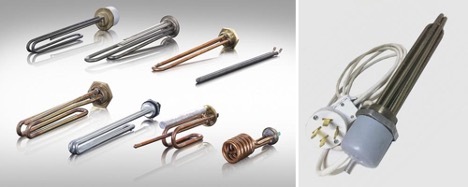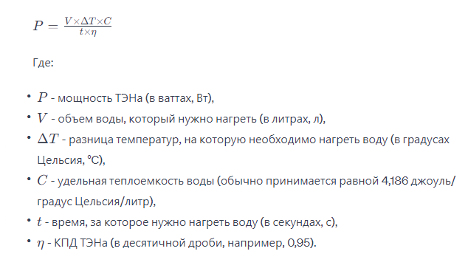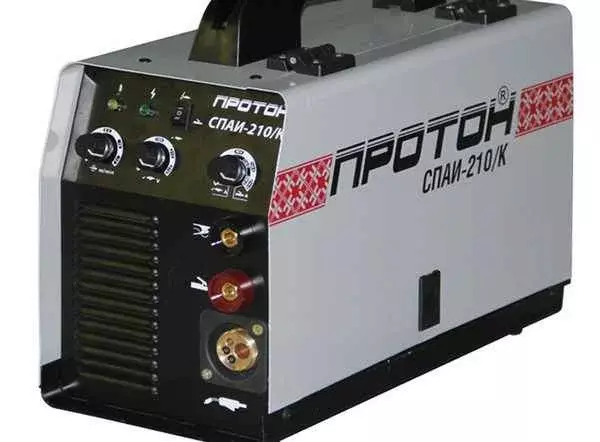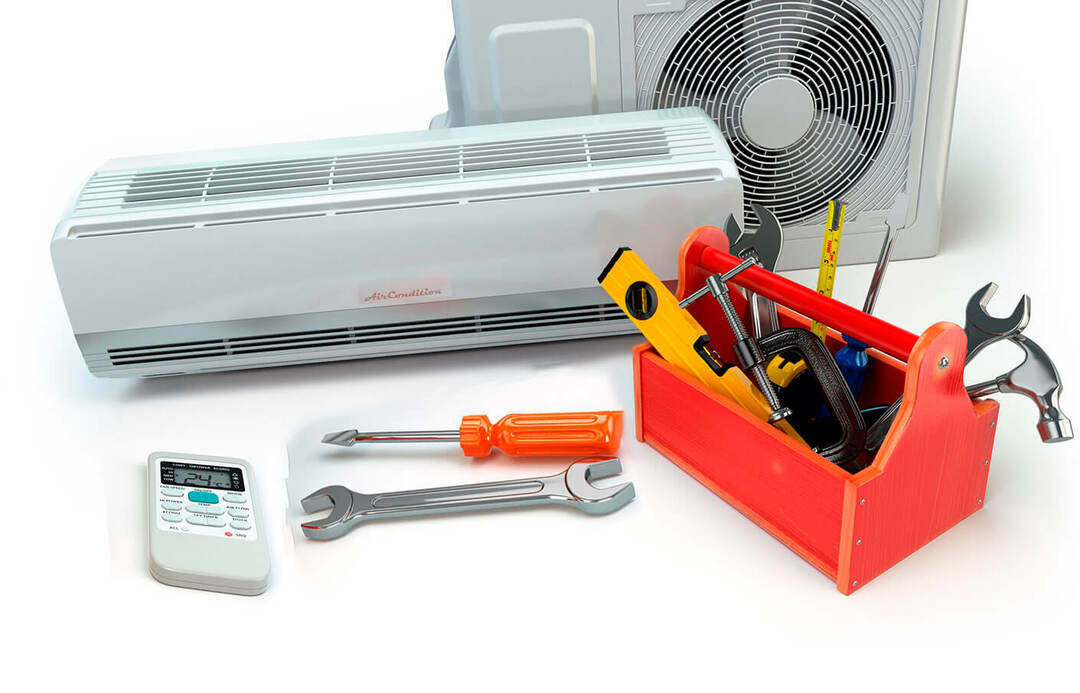One of the key parameters that you need to know when working with heating elements (tubular electric heaters) is their power. How to find out the power of the heating element? This can be done by calculating it based on the known resistance of the element. This is especially true when the data on the label is impossible to read or is missing.

The content of the article
- The principle of calculating power by resistance
- Connecting heating elements - what is the difference
- Power and efficiency
- Practical calculation of heating element power
- Conclusion
The principle of calculating power by resistance
Calculation of the heating element's power by resistance is based on Ohm's law and the power formula. According to this law, the power of an electrical device can be calculated by knowing its resistance and network voltage. This is a simple but effective way to determine how much power is required to heat water to a certain temperature in a given time frame.
Calculating the power of a heating element for heating water requires taking into account several factors, including the volume of water that needs to be heated and the time during which this should happen. This is especially important in water heating systems where efficiency and heating speed are of paramount importance.
Similar principles apply when calculating heating elements for heating air. It is important to consider the volume of the room and the desired temperature in order to ensure efficient heating.
Electric heater efficiency is a measure of how efficiently the device converts consumed electricity into heat. High efficiency means that most of the energy is used for heating rather than wasted as parasitic losses.
Connecting heating elements - what is the difference
Series and parallel connections of heating elements (tubular electric heaters) have differences that significantly affect their operation and use in heating systems.
Serial connection of heating elements:
- In a series circuit, the total voltage is distributed among all heating elements. If there are two heating elements in the circuit, and the network voltage is 220 volts, each heating element will receive 110 volts.
- All heating elements in a series circuit will have the same current.
- The total power of the system is equal to the sum of the powers of each heating element, but it will be less than with a parallel connection, since the voltage on each heating element is reduced.
- If one heating element fails, the entire circuit stops working, which can be both a disadvantage and an advantage from a safety point of view.
Parallel connection of heating elements:
- In a parallel circuit, each heating element is connected directly to the power source, receiving the full network voltage. For example, if the network voltage is 220 volts, each heating element will also operate at 220 volts.
- The current is distributed between the heating elements depending on their resistance. If one heating element has a higher resistance, it will pass less current.
- The total power of the system is higher, since each heating element operates at full network voltage.
- If one heating element fails, this does not affect the operation of the others, which ensures greater reliability of the system as a whole.
The choice between series and parallel connection depends on the requirements of the heating system, such as the required power, reliability and safety. Serial connection is more often used when lower power is needed and safety is important, in while parallel connection is preferred for systems with high power requirements and reliability.

Power and efficiency
These indicators are important characteristics that determine the efficiency of the water heating system. The power of heating elements for heating water determines how quickly the device can transfer thermal energy to water, while The efficiency of a heating element for water reflects how efficiently this energy is used for heating and is not lost into the environment.
The power of the heating element affects the time required to heat a certain volume of water. More powerful heating elements can heat water quickly, making them ideal for systems that require rapid heating, such as water heaters or central heating systems. However, higher wattage also means higher energy consumption, so it is important to consider the efficiency of the heating element to ensure the system is energy efficient.
The efficiency of a heating element is important because it shows how much of the energy consumed is actually used to heat water. A high-efficiency heating element converts most of the electrical energy into heat, which reduces energy costs and makes it cost-effective in the long term. A heating element with low efficiency, on the contrary, spends a significant part of the energy on useless heat losses, which leads to inefficient energy consumption and increased electricity bills.
Thus, choosing a heating element for heating water requires a balance between power and efficiency. The optimal heating element must be powerful enough to provide the required heating rate, and at the same time have high efficiency to ensure energy efficiency. This will not only help you save on energy costs, but also reduce your environmental impact.
Practical calculation of heating element power
Before you begin calculating heating elements for heating water, it is important to consider the following parameters:
- volume of water for heating;
- desired temperature;
- the time it takes to heat the water;
- mains voltage.
Based on these data, you can calculate the required power of the heating element using the formula:

Conclusion
Calculation of heating elements is an important process that helps determine the optimal power for efficient heating of water or air. Understanding how to calculate the power of a heating element and how to calculate the power of a heating element by resistance is the key to creating an efficient heating system that provides comfort and energy savings.


